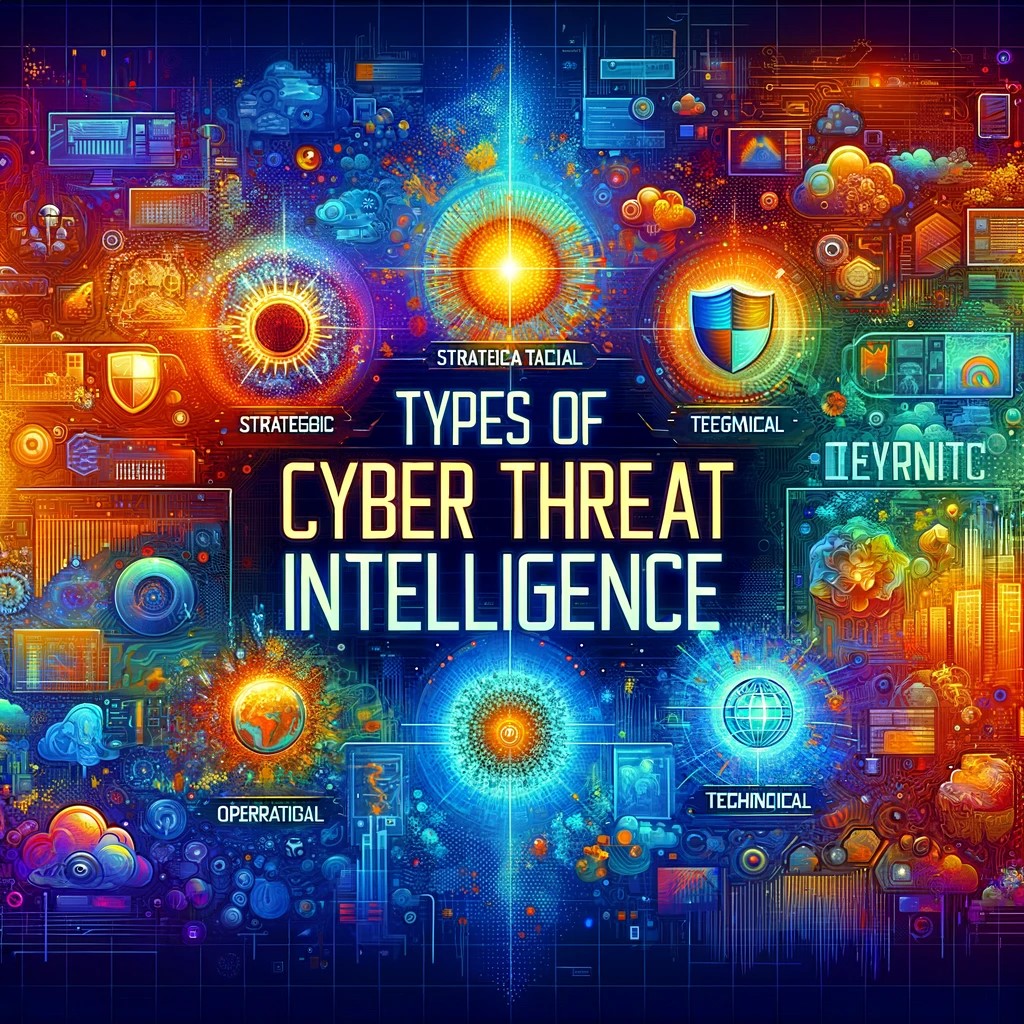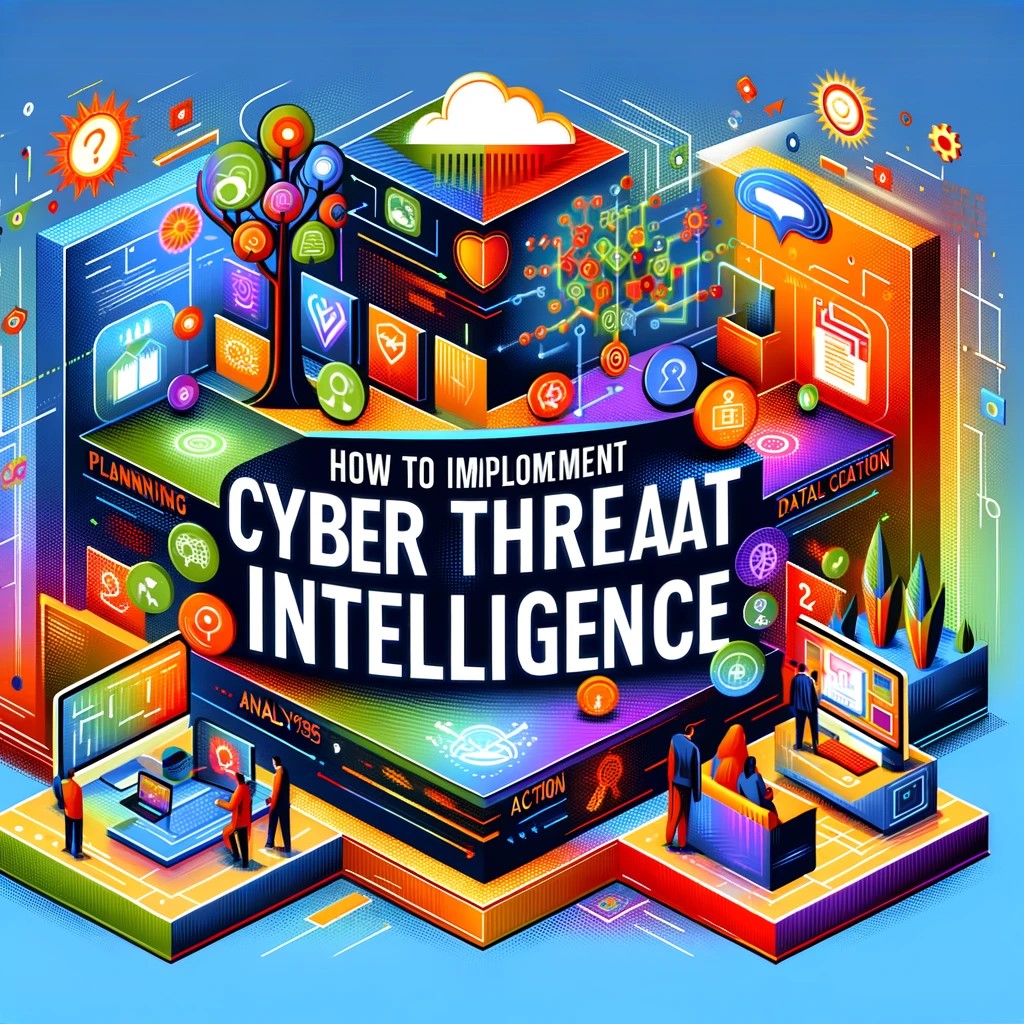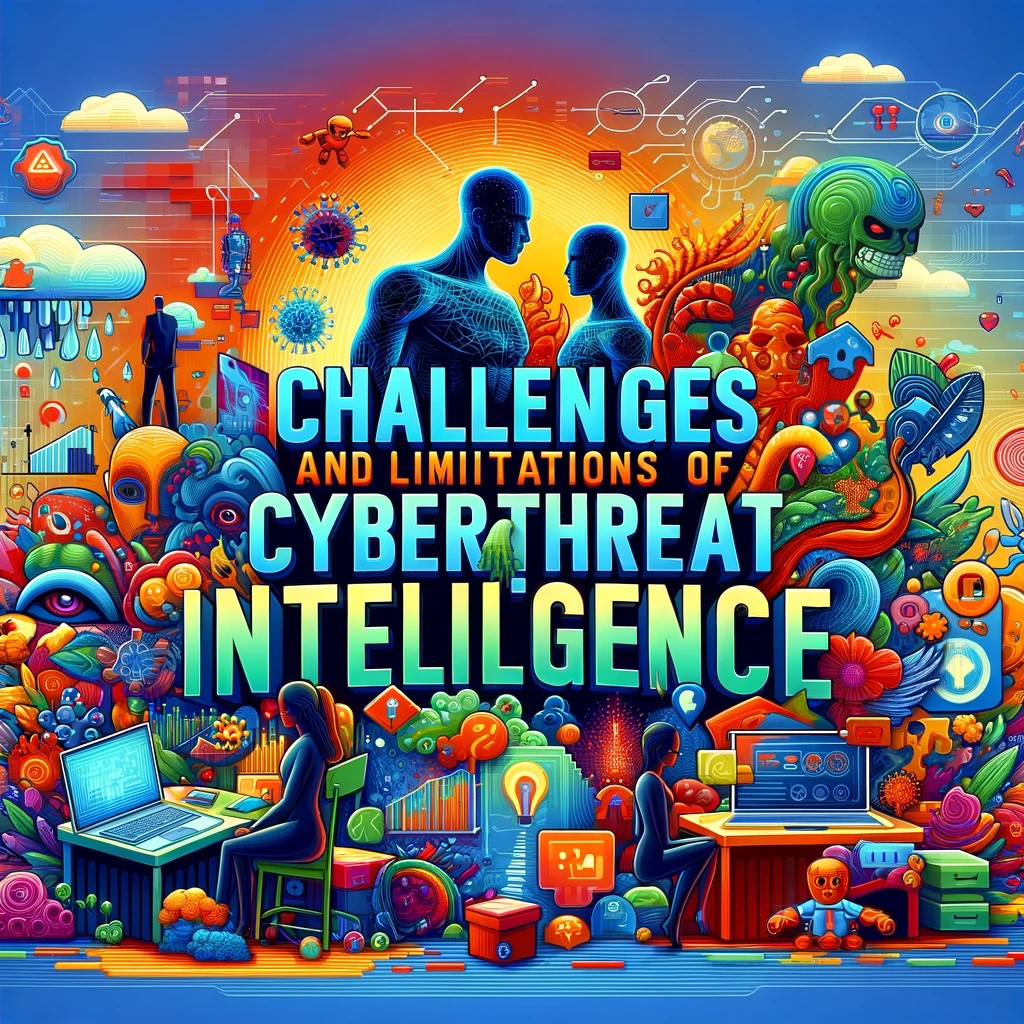CYBER THREAT INTELLIGENCE: THE SECRET TO STAYING AHEAD

Cyber threats are an ever-growing danger to organizations globally, making it necessary for security teams to agree to proactive measures in order to stay ahead of potential risks and respond effectively to security breaches.
One essential aspect of such proactive security measures is Cyber Threat Intelligence (CTI).
What is Cyber Threat Intelligence?
- Cyber Threat Intelligence (CTI) involves the collection, processing, and analysis of data.
- CTI aims to understand the motives, targets, and attack behaviors of threat actors.
- It empowers security teams with actionable threat insights tailored to the tactical, operational, and strategic levels.
- The insights gained enable organizations to shift from a reactive security posture to a proactive one.
The Importance of Cyber Threat Intelligence
- Proactive Monitoring: CTI allows for constant vigilance, monitoring events both inside and outside of the network, spotting potential threats before they materialize.
- Informed Decision-Making: With CTI, security decisions are made faster and are data-backed, leading to more accurate and efficient responses to cyber threats.
- Skill Enhancement: FOR578, a course designed for CTI, imbues security teams with the necessary skills to understand and counteract the evolving threat landscape.
- Strategic Advantage: Businesses gain a substantial edge against adversaries by anticipating and preparing for potential cyber attacks.
Overall, Cyber Threat Intelligence is about defending against threats and empowering businesses to go through the digital realm confidently and securely.
The Cyber Threat Intelligence Lifecycle
The Cyber Threat Intelligence Lifecycle is a structured process that organizations use to gather, analyze, and act upon intelligence about potential or existing cyber threats.
This lifecycle helps in making informed decisions about defense strategies and ensuring effective cybersecurity measures. Here’s an overview of the key stages in the CTI Lifecycle:
1. Planning and Requirement Setting: This is the first stage, where organizations identify their intelligence needs.
This step involves understanding what assets need protection, the potential threats these assets might face, and the type of intelligence required to safeguard these assets. It’s like setting a goal or a mission for the intelligence gathering process.
2. Collection: In this stage, data is collected from various sources to provide insights into potential or active threats.
This data can come from many places, including public sources, technical sources like network logs, human intelligence, and more. The idea is to gather as much relevant information as possible to provide a solid foundation for analysis.
3. Processing and Exploitation: The collected data is often raw and needs to be processed into a usable format. This includes organizing, formatting, and sometimes translating the data.
The aim is to turn a mass of raw data into something that can be easily analyzed and understood.
4. Analysis: This is a critical stage where the processed data is examined in detail to draw conclusions and uncover insights. Analysts look for patterns, anomalies, and correlations that can indicate a threat.
The analysis should answer questions like: What is the nature of the threat? Who is behind it? What is their intent and capability? How can the threat impact the organization?
5. Dissemination and Integration: The intelligence, now analyzed and formatted into reports or briefs, is shared with relevant stakeholders. This information needs to be integrated into the organization’s security processes and systems.
It’s about making sure the right people have the right information at the right time to take action.
6. Feedback: In this final stage, feedback is gathered on the intelligence process and the utility of the provided intelligence.
This feedback is used to improve future intelligence cycles, ensuring that the intelligence efforts are aligned with the organization’s needs and are effectively supporting decision-making processes.
The CTI Lifecycle is a continuous process. Each cycle of intelligence gathering, analysis, dissemination, and feedback helps organizations adapt to evolving cyber threats, enhancing their cybersecurity posture over time.

Type of Threat Intelligence
Cyber Threat Intelligence (CTI) is fundamental in shaping the cybersecurity approaches of organizations. It is typically categorized into strategic, tactical, and operational levels—each serving a unique purpose in the spectrum of threat detection and response.
Strategic Cyber Threat Intelligence
- Strategic CTI is about broader trends and cyber threats that impact organizations at a high level.
- This type of intelligence is usually intended for a non-technical audience, such as executives and decision-makers.
- It provides insight into the risks associated with cyber threats, helps in understanding the intent and capabilities of adversaries, and shapes policy and planning.
- Strategic CTI can safeguard an organization’s future by predicting and preparing for long-term cyber threats that could affect business continuity.
Operational Cyber Threat Intelligence
- Operational CTI, sometimes referred to as campaign intelligence, concerns itself with specific attacks and campaigns.
- It includes technical details and the analysis of incidents to understand the nature of the threat and the identity and motive of the attackers.
- Security professionals use operational CTI to dissect intricate incidents and coordinate a response to ongoing or imminent attacks.
- Operational intelligence is highly tactical and technical, making it most useful to those directly involved in threat mitigation.
Benefits of Cyber Threat Intelligence
The application of Cyber Threat Intelligence (CTI) offers a array of benefits that increase an organization’s ability to counter cyber threats effectively. Let’s explore some key advantages:
Proactive Threat Monitoring
- CTI grants organizations the ability to monitor threats proactively instead of reacting to breaches after they occur.
- With insights into the latest threat landscape, companies can adjust their defenses in real-time, ensuring greater resilience against attacks.
- Security teams are empowered to recognize signs of compromise early, often before they turn into full-blown incidents.
- CTI allows for continuous improvement of security measures based on evolving threats, thus maintaining an advanced security posture.
Enhanced Incident Response
- Access to detailed threat intelligence helps for faster and more effective incident response and resolution.
- By knowing an attacker’s tactics, techniques, and procedures, responders can tailor their strategies to combat specific threats head-on.
- Real-time CTI feeds help organizations stay prepared for emerging threats and swiftly adapt their incident response plans accordingly.
- It reduces response times and minimizes the impact of security breaches on business operations.
Improved Cybersecurity Posture
- Organizations leveraging CTI are seen as less attractive targets by attackers, given their reputation for strong security postures.
- CTI-driven strategies contribute to reducing the overall risk profile of an organization, making it more resilient to potential cyber attacks.
- An improved cybersecurity posture means greater trust from customers, partners, and stakeholders.
- Moreover, staying ahead of threats with CTi leads to long-term cost savings by avoiding the financial and reputational damage associated with data breaches.

How to Implement Cyber Threat Intelligence
To leverage the power of Cyber Threat Intelligence (CTI) for advanced cybersecurity, organizations must employ CTI approaches meticulously. The process involves deploying sophisticated controls to neutralize potential threats based on acquired intelligence.
Identify Critical Assets
- Recognizing what to defend is pivotal; identify sensitive data, intellectual property, and key IT systems that are crucial for your organization.
- Once these assets are identified, security measures can be tailored to protect these prime targets effectively.
Develop a Threat Intelligence Strategy
- Formulate a strategy to collect, analyze, and act upon the intelligence regarding potential threats.
- Strategic planning is a cornerstone for efficiently integrating threat information into your security infrastructure.
Setting up Automated Threat Monitoring Systems
- Automate the monitoring process to detect threats swiftly, ensuring continuous surveillance and faster reaction to suspicious activities.
- Advanced systems can filter through false positives and highlight genuine threats to prioritize efforts.
Subscribing to Threat Intelligence Feeds
- Staying informed about the evolving threat landscape is crucial; subscribe to reliable threat intelligence feeds for real-time updates.
- These feeds provide actionable insights that can be instrumental in pre-emptively fortifying defenses against imminent cyber-attacks.
Partnering with Third-Party Providers
Engaging with third-party Cyber Threat Intelligence (CTI) providers can be a strategic move for organizations aiming to enhance their cyber defense mechanisms.
By leveraging external expertise and resources, businesses can heighten their security posture against a sophisticated and constantly evolving threat landscape.
Benefits of Collaboration
- **Third-Party Risk Mitigation**: Providers can help identify and monitor potential security risks associated with vendors or partner companies.
- **Comprehensive Monitoring**: Continuous surveillance of various online environments, such as the deep, dark, and surface web, is facilitated to detect potential data leaks.
- **Alerts on Third-Party Breaches**: Timely notification about third-party breaches that could affect employee credentials or sensitive personal information.
- **Ransomware Support**: Availability of dedicated hotlines, such as 1-800-484-9426, for immediate assistance in the event of ransomware attacks.
Choosing the Right Cyber Threat Intelligence Provider
- **Threat Coverage**: Ensure the provider has a broad scope that encompasses numerous threat actors, attack vectors, and industry-specific risks.
- **Customization**: Intelligence feeds should be customizable to align with the unique needs of your organization.
- **Proven Expertise**: An experienced team of analysts who can not only deliver raw data but also interpret it to provide actionable insights is crucial.
Selecting a suitable CTI provider requires rigorous evaluation of their capacity to offer robust risk assessment, personalized intelligence, and sector-wide threat coverage.
A collaborative approach with third-party experts empowers organizations to stay one step ahead in the cybersecurity game.

Cyber Threat Intelligence Tools and Technologies
Data Collection and Analysis Tools
- **Automated Data Collection**: Tools that automatically gather intelligence from various sources, including open-source intelligence (OSINT), social media, and the dark web.
- **Threat Feeds**: Aggregated data streams that provide real-time information on threats and malicious activities.
- **Advanced Analytics**: Sophisticated software to analyze and correlate data, identifying patterns and potential vulnerabilities.
- **Machine Learning Algorithms**: Utilized to predict future attacks based on historical data and current trends.
Threat Intelligence Platforms
- **Integration Capabilities**: Platforms that can integrate with existing security tools to enhance visibility and response capabilities.
- **Customizable Dashboards**: User-friendly interfaces that allow security analysts to tailor views and controls according to specific organizational needs.
- **Collaboration Features**: Enabling sharing of intelligence across teams and with external partners for a collective defense approach.
- **Incident Response Support**: Tools that offer guidance and procedures for responding to and mitigating identified threats.
These tools and technologies play a pivotal role in equipping security teams with actionable insights.
Armed with the knowledge from CTI, organizations can maintain a strong security posture, protect against sophisticated cyber-attacks, and uphold their reputation and operational continuity.
Case Studies: Successful Applications of Cyber Threat Intelligence
Real-world Examples
- Finance Sector: A major bank integrated CTI with their existing security infrastructure, allowing them to preempt attempts at wire fraud and identify phishing campaigns designed to capture customer credentials.
- Healthcare Industry: A healthcare provider used CTI to detect a ransomware campaign targeting their systems, enabling them to isolate affected systems quickly and prevent widespread encryption of patient data.
- Retail Corporations: An international retailer employed CTI to monitor dark web chatter and discovered stolen credit card information being sold, which led to tighter security measures and collaboration with law enforcement.
- Government Agencies: A government entity used CTI to identify foreign cyber espionage activities, allowing them to secure sensitive communications and protect national security interests.
Lessons Learned
- Continuous Monitoring: Constant vigilance enables organizations to detect anomalies early and respond swiftly.
- Integration of Tools: Effectively combining CTI with other security solutions enhances overall threat visibility and incident response.
- Sharing Intelligence: Collaboration among organizations and with government bodies strengthens the ability to anticipate and mitigate threats.
- Investing in Training: Educating staff about the value and applications of CTI fosters a security-centric culture.
These cases demonstrate how the strategic application of CTI can lead to successful thwarting of cyber attacks, offer crucial insights for organizations working to enhance their cyber defenses, and underscore the importance of adapting to a continually evolving digital threat landscape.

Challenges and Limitations of Cyber Threat Intelligence
Though Cyber Threat Intelligence (CTI) has proven vital in mitigating cyber threats, deploying CTI effectively presents several challenges that can impede its success.
While organizations stand to gain immensely from the proper use of CTI, they must navigate through common issues such as data deluge and discerning false positives to truly benefit from this tool.
Below are the main challenges and their potential solutions revolving around CTI deployment.
Overcoming Obstacles
- Data Overload: Analysts often grapple with the sheer volume of data, which can veil critical threats beneath unnecessary information.
- False Positives: Distinguishing between false alarms and genuine threats consumes valuable time and resources, potentially diverting attention from real dangers.
- Skills Shortage: The deficit of professionals trained in CTI can limit an organization’s ability to analyze and interpret intelligence effectively.
- Collaboration Hurdles: Failure to share intelligence can create blind spots in an organization’s defense strategy, yet cross-functional collaboration remains a persistent challenge.
- Legal and Ethical Compliance: Balancing aggressive intelligence gathering with legal and ethical constraints is necessary to avoid potential litigation or reputational damage.
Ensuring Data Accuracy and Relevance
- Investing in Tools: Utilizing advanced analytical tools can help sift through the data, highlighting relevant information to surface actionable insights.
- Regular Training: Continuous professional development ensures that security teams can keep up with evolving threats and sharpen their analytical proficiencies.
- Clear Protocols: Establishing well-defined processes for intelligence sharing can foster effective collaboration and information exchange within and across organizations.
- Focus on Quality: Prioritizing high-fidelity intelligence over quantity can reduce noise and enhance overall threat awareness.
- Legal Frameworks: Developing robust legal frameworks that define the scope and methodology of intelligence operations to remain within ethical boundaries.
Conclusion – The Future of Cyber Threat Intelligence
- Trend Analysis: The ability to predict and prepare for future cyber threats based on current data will continue to be a cornerstone of strategic threat intelligence.
- Automation and AI: Increased adoption of automation and artificial intelligence will improve the accuracy, speed, and efficiency of threat detection and response mechanisms.
- Threat Sharing Initiatives: Collaborative efforts, such as shared threat libraries and real-time exchange platforms, will enhance collective security posture across industries.
- Legislation: New legislation related to cybersecurity will likely be introduced, requiring organizations to comply with heavier regulatory demands for data protection.
Amidst the evolving digital threats, organizations are recognizing the vital role of Cyber Threat Intelligence (CTI).
With the pace at which technology advances, robust and strategic application of CTI is becoming more indispensable.
To safeguard society in our digital age, organizations must prioritize cybersecurity and stay vigilant to the dynamic threat landscape.
Ready to fortify your cybersecurity?
Connect with Cyb-Uranus and let’s craft a tailored security strategy that safeguards your business. Act now for a safer digital tomorrow!

